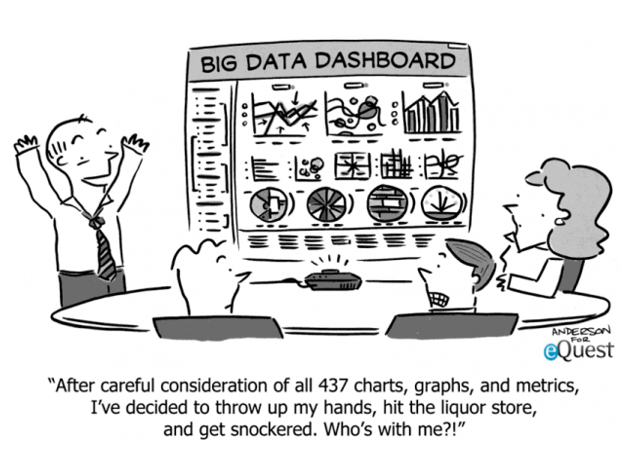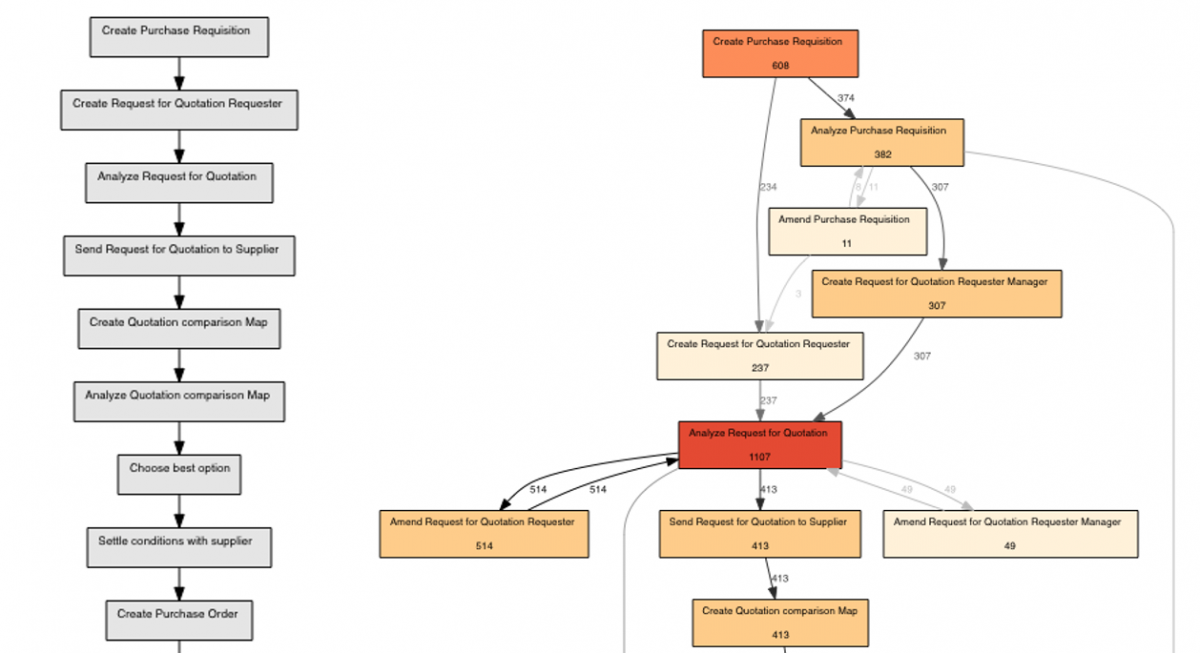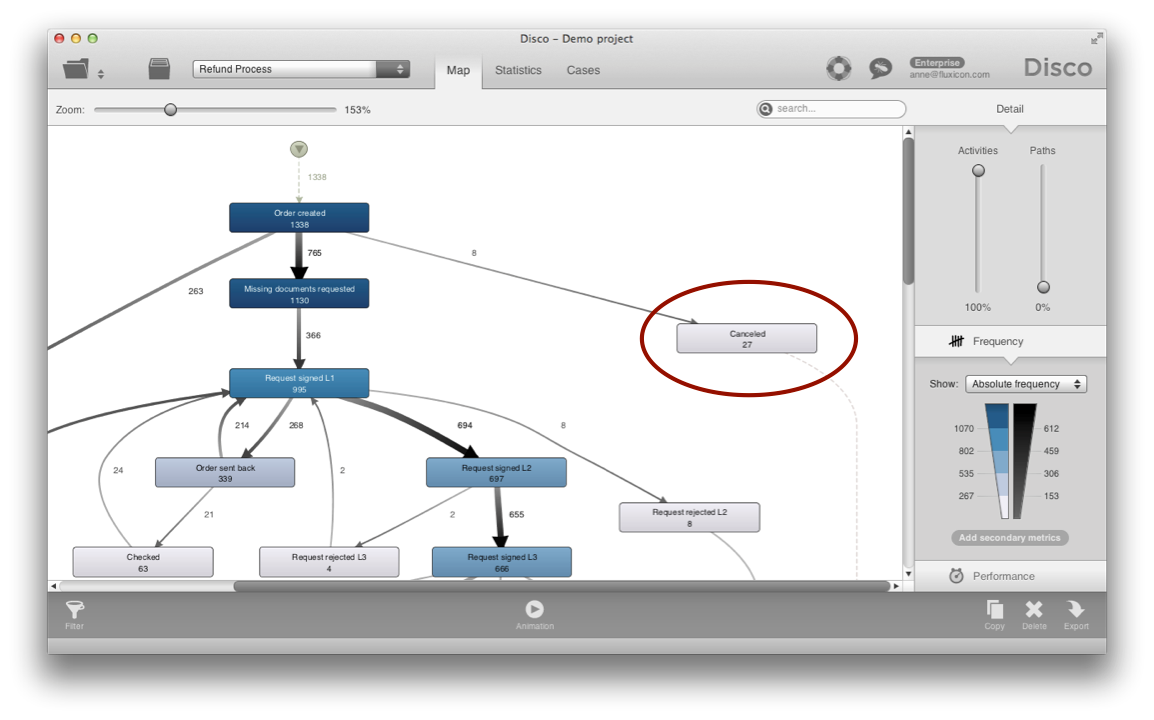- nl
- en
- fr
Bye bye big data. Hello in-house data!

Big data is still a hot topic today. And yet, the majority of Belgian companies get little benefit out of it. This makes sense, since these companies hardly pay attention to the structured data coming from their own IT systems, in other words: their in-house data. For many companies, however, there lies the key to success. Process mining can bring this in-house data to life and provide business leaders with new insights that enable them to optimize their processes.
Dear entrepreneur, how are you handling big data in your company? Probably, you are now staring vacantly into space, not knowing what to respond. You might also simply be shrugging your shoulders.
This might well be the effect that the expression ‘big data’ has on many entrepreneurs today. Indeed, we are overwhelmed with information about big data. Experts talk about the Internet of Things, whereby smart sensors collect a mass of information, about gigantic unstructured data sets, about behavioural data harvested from social media and about powerful analytical tools that lead to amazing insights.
Ready for big data?
The big data phenomenon was on the up in the internet’s hype lists in recent years. And yet, entrepreneurs have no clue what they can do with it. A missed opportunity?

Nobody doubts the value of big data. However, most companies are not ready yet for big data mining: the exploitation of the masses of unstructured data that are coming our way. Data mining is indeed a comprehensive and expensive process and a bridge too far for many companies.
In-house data first!
Because of the big data hype, in-house data is often overlooked. Many entrepreneurs have rightfully invested in various IT systems: ERP, CRM, marketing automation… But still, companies are doing too little with the data that has been stored in those systems. That is how companies lose impact, because they need to postpone important decisions. According to Forrester Research, most companies hardly analyze 12% of their in-house data. So, there’s a huge potential.
In the near future, private corporate data will deliver companies much more benefit than big data will. The key to success for many companies is a detailed analysis of the company's own data. Companies can use their in-house data for optimizing processes, leading to increased ROI and better performance of the company in general.
Many companies determine a number of KPIs. These KPIs are measured and quantified and often reveal a number of problems. But KPIs do not reveal the cause of the problem: they do not demonstrate why a particular KPI is over- or underachieving. Many questions remain unanswered. For example: Why is there an increasing number of complaints? Why are there so many late deliveries? Conventional analysis techniques are not always able to provide an answer to these questions.
The power of process mining
How exactly can in-house data contribute to process improvement in a company? More and more companies realize that the answer might well lie in process mining. Process mining is a technique whereby business processes are documented and visualized, as they actually occur in practice, based on event logs. Specialized process mining software then analyzes these event logs.
Thus, process mining does not start from a predefined process model, but uses data collected from the actual business processes. A bottom up process, so to speak. This method has been co-developed at the Technical University of Eindhoven and is increasingly finding its way into the business community.
A view on the process
Many entrepreneurs need a view of their end-to-end processes. This is often difficult because different departments have their own way of working and are using different IT systems. With process mining, it is possible to get a view of the entire process, regardless of the data source. That actual process may well be thoroughly different from the predetermined (theoretical) process model. Just compare these two graphs.

Figure 1. Left: (theoretical) process model vs. right: process in practice
The pre-defined model on the left-hand side is based on a taut, linear process. The reality, the graph on the right-hand side, looks completely different. That graph has been generated by process mining software, based on event logs. In the graph on the right, we have a view of the process as it actually occurs in the workplace, including all process anomalies and process exceptions.
This way, process mining ensures full transparency in business processes. The technique provides entrepreneurs with a perfect tool to gain control over complex processes. With process mining, it is possible to handle performance and compliance problems directly. The methodology allows entrepreneurs to:
- Reveal process bottlenecks;
- Perfectly predict process lead times;
- Quantify processes for compliance purposes.
How to start with process mining?
Real big data tools often require a large investment in time and money. Fortunately, this is not the case for process mining. The application of process mining requires no complex infrastructure and can be based on data collected from relational databases, spreadsheets or simple log files. That data is then transformed into a so-called event log, which describes events by the case to which they belong (e.g. order number), the name of the associated activity, a time stamp, and any number of additional attributes (for example, the customer's name or value of the order).
Experience shows that a first process mining analysis may yield surprising insights: bottlenecks are located in other places than expected and the number of deviations is often unexpectedly high. In other words: many starting points for process improvement.

Figure 2. Process visualization by means of process mining software Disco from Fluxicon
Let’s get started!
With process mining, you can get started relatively quickly, even as an SME. Big data? No thanks, not just yet. But if you want to take your business process optimization seriously, then process mining is the option you should consider. Surely you have enough in-house data that you can use as a starting point. And when you no longer see the forest for the trees, then you can call upon an external partner to guide you along the way.
Which processes do you need to optimize? Do you want to know whether process mining can bring added value? Ask us!
Dennis Houthoofd - November 2, 2015
